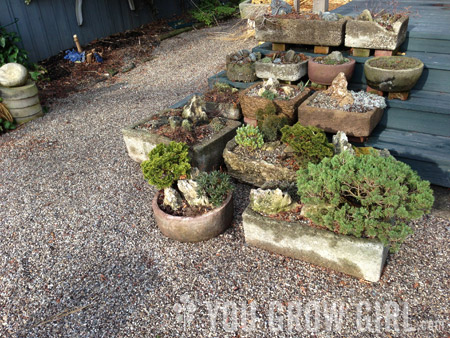

No matter the season, there is always something of interest (many, many things of interest) going on in Barry’s garden and even though I know not to show up without a proper camera, I can’t deny that sometimes (most times) I am lazy and the camera stays at home. Of course, I always regret it later as I did when I visited his place on Friday to see what was new.
And what was new was everything. It was the day of the epic thaw. One day our city gardens are buried in snow, the likes of which we haven’t seen in ages, and the next the sun is shinning, the birds are getting busy, and some guy is traipsing down the street in a T-shirt and flip-flops like it’s August, except that it isn’t August it’s January, and it may be unseasonably warm, but it’s nowhere near Spring Break in Cancun 2013 (Spring Break! Woooo!). That dude is going to regret it next week when he’s stuck in the bathroom suffering the symptoms of the NoroVirus, I tell you what.

I love these first big thaws. First of all, they are a desperately needed reminder that the winter isn’t forever. Spring will come again. They also reveal that life has not ceased underneath the snow. Plants are alive. Some of them are green and fresh. Take this lush and very alive hellebore (above) in Barry’s garden. Before meeting Barry, I had never paid hellebores much mind. Now I can appreciate their merits, the main one being that they stay green year-round!
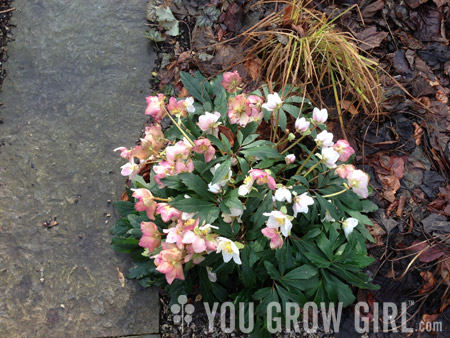
Some of them, like this Helleborus niger ‘Praecox’ bloom in December and January when most plants are months away from breaking dormancy, let alone making flowers. Let me repeat: I took this photo just a few days ago. In January. In Toronto. What a plant!
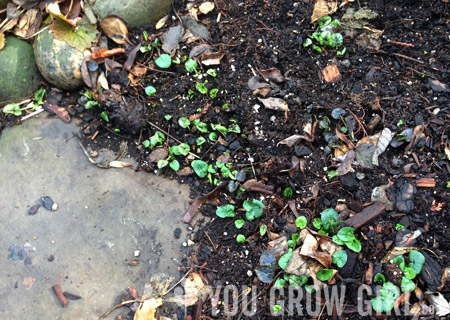
The leaves of Ranunculus ficaria are making an appearance above the soil. Barry grows them in a bog that he made by burying a pond form underneath the soil. Over on his blog, A Sense of Place, Barry has a great gallery depicting the many forms that are in his garden. My favourite is (and will always be) the fabulously named ‘Brazen Hussy’.
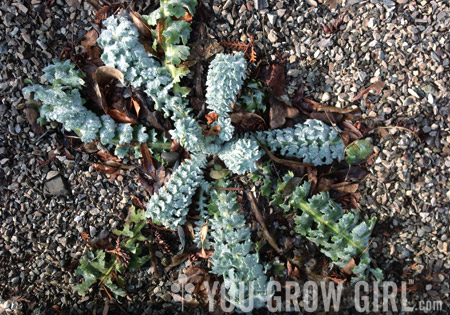
The horned poppy (Glaucium flavum) seems to look good at any time of the year. Barry gave me a seedling to transplant into my garden this past fall and I am hoping that it makes it through this first winter and will perform as well for me in the spring.

A black granite sculpture by Simon Muscat is flanked by Bergenia cordifolia.
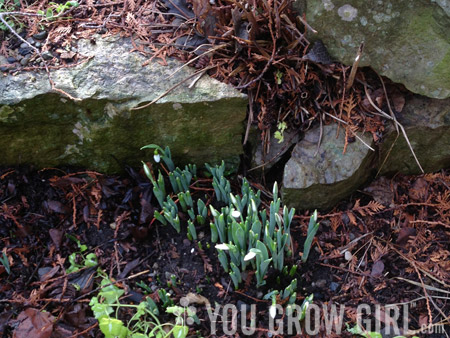
Galanthus elwesii offer up their blooms much earlier than the more common G. nivalis.
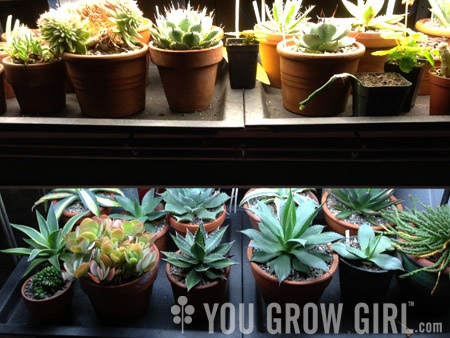
Next, we went inside to see what was going on in the greenhouse. The outside door was winter-proofed so we had to first make our way through the basement where I stopped to look at the agave and succulents overwintering underneath lights.

Barry over-winters his large, potted rosemary plants inside a cold, unheated greenhouse. It’s worth it for the colourful, edible flowers that they produce through the winter.
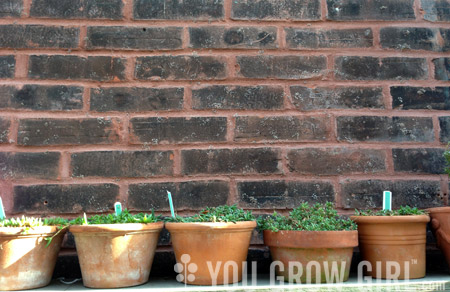
I leave you with this photo of a uniform line of delosperma in pots. Many of these flowering South African succulents can withstand the cold winter outside (especially in troughs), but I overwinter mine in a cold, but sheltered spot (and so does Barry) because they are in terracotta pots that would break if left outdoors.
I have several additional photos to show you of the activity in Barry’s unheated greenhouse, but I will leave them for another day.
MORE, MORE, MORE
There are many more posts about my friend Barry and his super inspiring urban garden on this site including a few posts that depict his garden in the spring and summer months. You an also follow along with his adventures on his blog.
love hellebores one of my favourite plants as it brightens up the garden in winter